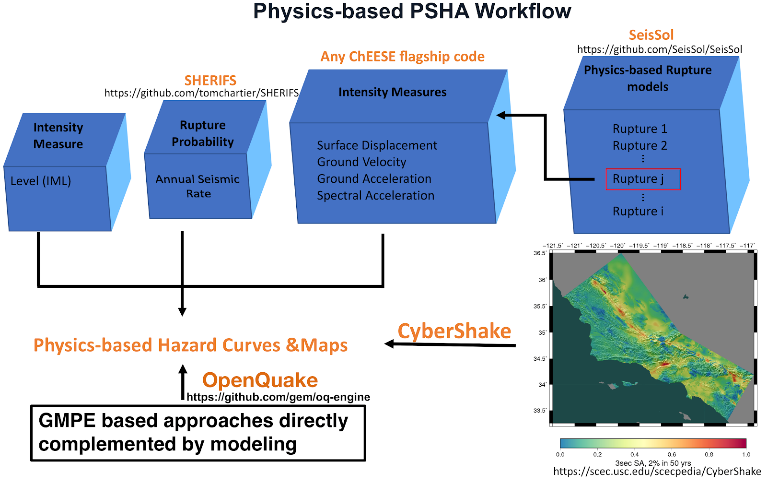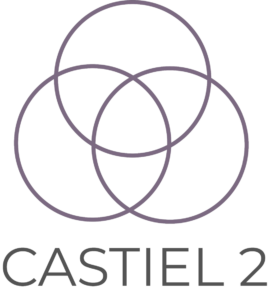Physics-Based Probabilistic Seismic Hazard Assessment (PSHA)
Short description
Results & Achievements
Objectives
Technologies
Workflow
The workflow of this pilot is shown in Figure 1.
To use the SeisSol code to run fully non-linear dynamic rupture simulations, accounting for various fault geometries, 3D velocity structures, off-fault plasticity, and model parameters uncertainties, to build a fully physics-based dynamic rupture database of mechanically plausible scenarios.
Then the linked post-processing python codes are used to extract ground shakings (PGD, PGV, PGA and SA in different periods) from the surface output of SeisSol simulations to build a ground shaking database.
SHERIFS uses a logic tree method, with the input of the fault to fault ruptures from dynamic rupture database, converting the slip rate to the annual seismic rate given the geometry of the fault system.
With the rupture probability estimation from SHERIFS, and ground shakings from the SeisSol simulations, we can generate the hazard curves for selected site locations and hazard maps for the study region.
In addition, the OpenQuake can use the physics-based ground motion models/prediction equations, established with the ground shaking database from fully dynamic rupture simulations. And the Cybershake, which is based on the kinematic simulations, to perform the PSHA and complement the fully physics-based PSHA.
Software involved
SeisSol (LMU)
ExaHyPE (TUM)
AWP-ODC (SCEC)
SHERIFS (Fault2SHA and GEM)
sam(oa)² (TUM)
OpenQuake (GEM): https://github.com/gem/oq-engine
Pre-processing:
Mesh generation tools: Gmsh (open source), Simmetrix/SimModeler (free for academic institution), PUMGen
Post-processing & Visualization: Paraview, python tools
Collaborating Institutions
IMO, BSC, TUM, INGV, SCEC, GEM, FAULT2SHA, Icelandic Civil Protection, Italian Civil Protection





